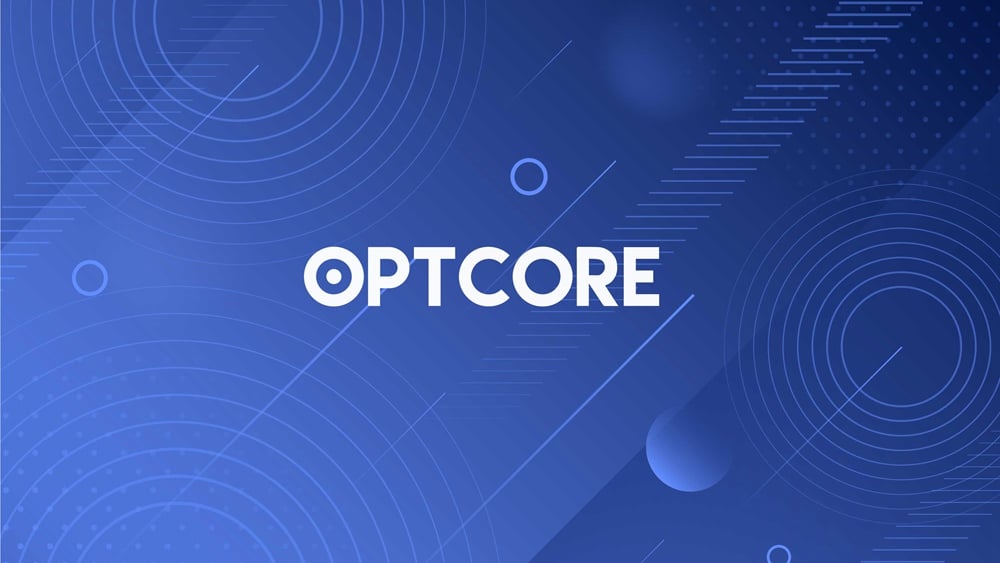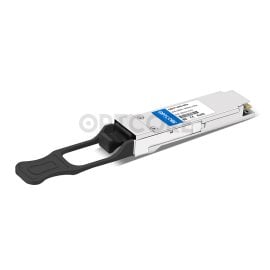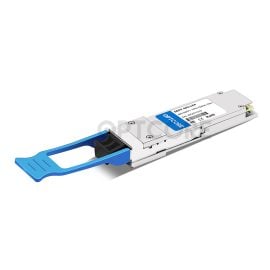Blog
What is 40 Gigabit Ethernet? A Beginner’s Guide
40 Gigabit Ethernet, also called 40GbE or 40G Ethernet, is an IEEE 802.3ba standard. This protocol enables high-speed data transmission at a rate of 40 gigabits per second (Gbps). As telecommunications, data centers, and network management systems need to process high volumes of data traffic, 40 Gigabit Ethernet has become increasingly vital.
This blog covers the accurate definition of 40GbE, along with its use cases, product types, benefits, and a comparison of other Gigabit Ethernet standards like 25 G and 100 G. By the way, as an experienced supplier of fiber optic solutions, OPTCORE can offer you an extensive combination of affordable products for 40GbE connections.
Table of contents
40 Gigabit Ethernet: Definition
Like 100 Gigabit Ethernet, 40 Gigabit Ethernet has been part of IEEE 802.3ba standards. 40GbE aggregates four 10 Gigabit Ethernet lanes into a single, faster connection to improve data transfer efficiency. Due to its reliability, high speed, and scalability, data centers, telecom networks, and enterprise networks are vying to adopt the 40G Ethernet standard.
A 40 GbE network layer consists of a pair of transceivers linked by copper cables (the best choice is Cat8) or fiber cables (singlemode fiber or multimode fiber). 40G Ethernet networking transceivers include four types: QSFP (Quad Small-Form-Factor Pluggable), QSFP+, CXP, and CFP. Among them, QSFP+ comes in the central position. Additionally, the cabling for 40GbE can be either a direct-attach cable (DAC) or a structured cabling system (utilizing patch cords, panels, and separate trunk cables).
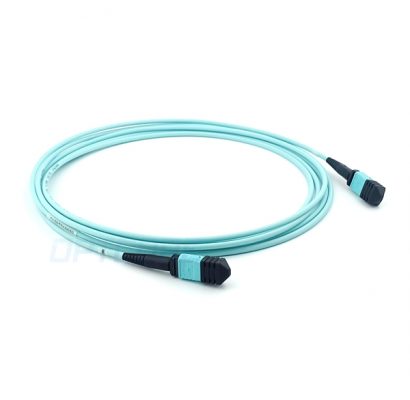
Note: CXP is a copper connector system defined by the InfiniBand Trade Association. It provides twelve 10 Gbps links suitable for a single 100 Gigabit Ethernet, three 40 Gigabit Ethernet channels, or twelve 10 Gigabit Ethernet channels, or a single InfiniBand 12×QDR link.
CFP is short for C Form-Factor Pluggable transceivers (typically related to 100G Ethernet). It works in 40G mode over multimode fiber using 12 transmit and 12 receive fiber cores. Moreover, it provides up to three 40 Gigabit Ethernet ports.
25G vs. 40G vs. 100G Ethernet
Gigabit Ethernet networks have evolved rapidly, ranging from 1G to 100G. To better understand 40G Ethernet, a table is available for you to compare it with other Ethernet standards.
| Ethernet Types | 25 GbE | 40 GbE | 100 GbE |
| Lane Speed | 25 Gbps | 10 Gbps | 25 Gbps |
| Compatibility | Backward compatibility to 10 GbE | Compatible with 25 GbE (using adapters) | Limited backward compatibility with 25 GbE, and 40 GbE |
| Cost | Most Affordable | Moderate Price | Most Expensive |
| Applications | Cloud centers, and high-performance computing | Large data centers, virtualization, and mid-market companies | Data centers, cloud computing, finance, and healthcare |
Products for 40 Gigabit Ethernet Transmission
To ensure the success of 40G Ethernet transmission, several channels are necessary. These include 40G QSFP transceivers, 40G Ethernet switches, copper cables (40G QSFP+ DAC/AOC and 40G QSFP+ Breakout DAC/AOC), and singlemode/multimode fibers.
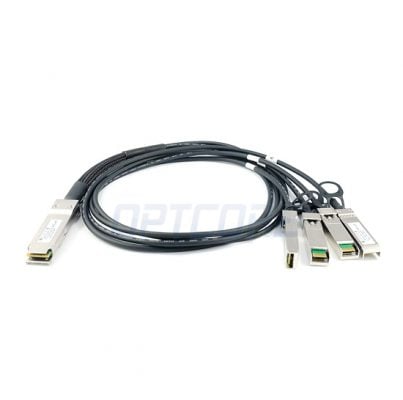
OPTCORE 40G QSFP Transceiver
As stated in the definition of 40GbE, four types of transceivers are suitable for 40G Ethernet transmission. They are QSFP, QSFP+, CXP, and CFP. QSFP+ is an enhanced version of QSFP, and CXP is a copper connector system defined by the InfiniBand Trade Association. Moreover, CFP is generally used for 100G Ethernet. This section focuses on what transceivers OPTCORE can offer.
Such transceivers, used for 40G connectivity, are popular with many campuses, data centers, and computer networks. They have a duplex LC connector or a 12-fiber MPO-type (Multi-Fiber Push On) connector. Besides, they come in various forms, namely, 40GBASE-SR4, 40GBASE-LR4, 40GBASE-ER4, 40GBASE-ZR4, 40GBASE-PSM4, and 40GBASE-BiDi variants.
Here are some products for you to choose from.
OPTCORE Copper Cables
Cat8 is an appropriate choice for achieving 40G Ethernet connectivity up to 30 meters. This patch cable features 40GBase-T ports, making it ideal for high-density networking environments. Other copper cables for 40GbE connections are 40G QSFP+ DAC/AOC and 40G QSFP+ Breakout DAC/AOC.
The 40G QSFP+ DAC is well-suited for short 40-gigabit links between QSFP ports of various switches within and across adjacent racks. OPTCORE provides passive solutions for 0.5 m to 7 m and active solutions for 1 m to 10 m lengths, respectively. Additionally, 40G QSFP+ AOC is a perfect solution for QSFP+ DACs and QSFP+ transceivers.
40G QSFP+ Breakout DAC/AOC fits the need for short-distance transmission. The breakout DAC enables connections between devices with QSFP+ ports and SFP+ ports.
Singlemode and Multimode Fibers
Transmission with multimode fibers relies on 40GBASE-SR4. This process utilizes four 10G channels, each of which uses 2 fibers (one Tx and one Rx) with 8 fibers needed in total. Such a transmission is called parallel transmission, and four 10G channels create a 40G packet through simultaneous data transfer and reception.
To establish 40GbE connections, it is also possible to use singlemode fibers such as MTP connectors or LC duplex ports. Two standards hold for the transmission of this kind: serial transmission and parallel transmission. The former uses two fibers, meeting the needs of 40GBASE-LR4, 40GBASE-ER4, and 40GBASE-IR. The latter employs eight fibers, transmitting data via 40GBASE-LR4 (PSM), 40GBASE-PLR4, and 40GBASE-PI4 (PSM).
40G Ethernet Switches
40G switches provide high bandwidth, network virtualization, and redundancy. These features guarantee efficient deployment for campus core and distributed networks. A case in point is the Cisco Nexus 9200 platform switch that supports 40Gbps connectivity in compact form factors.
Benefits of 40 Gigabit Ethernet
Reliability: 40GbE can ensure smooth data transmission when used in high-density computing and data-intensive applications. This allows data-intensive organizations to handle their massive data more stably.
Scalability: This is because 40 Gigabit Ethernet easily integrates into existing network facilities. This feature makes it a scalable and flexible alternative for a wide range of organizations.
Cost-Effectiveness: 40 GbE costs less money and is much easier to deploy than 100G Ethernet does. Many mid-market enterprises welcome the idea of adopting 40 Gigabit Ethernet because it permits them to use multiple applications with adequate speed requirements.
40 Gigabit Ethernet: Use Cases
40G Ethernet has many advantages, making it a preferred option for many organizations. Features such as cost-effectiveness, reliability, and scalability have expanded the application scope of 40GbE. Telecom networks, data centers, enterprise networks, and cloud services find it more worthwhile to introduce such an Ethernet protocol.
Data Centers
These centers install more complex systems that permit aggregation, routing, and switching. The use of 40GbE helps them boost data handling and storage efficiency.
Telecom Networks
The high speed offered by 40G Ethernet is supportive of high-volume data traffic and communication. It is, therefore, possible for telecommunications networks to enable peering points between internet service providers and exchange points in the network.
Enterprise Networks
40GbE perfectly fits the need for long-haul and switch-to-switch transmissions. Networks of large enterprises call for data transmission with high bandwidth and low latency. Therefore, using 40 Gigabit Ethernet can guarantee fast and seamless internal connections.
Cloud Services
By transferring data at a rate of 40Gbps, 40GbE is a good choice for cloud computing and high-performance computing systems. This standard provides rapid data access and ensures high data transfer.
Conclusion
Defined by the IEEE 802.3ba standard, 40 Gigabit Ethernet strikes a good balance between speed, cost-effectiveness, and reliability. Owing to these benefits, more data centers and mid-market companies are also considering adopting this protocol. To establish 40G Ethernet transmission, QSFP transceivers, copper cables, and multimode or singlemode fibers are essential.
OPTCORE is a supplier with years of experience in optical fiber solutions. We are delighted to offer you an extensive portfolio of the above products, making it convenient for you to deploy 40GbE networks.
Reference
- https://lightyear.ai/tips/what-is-40-gigabit-ethernet
Read More
- What is 2.5 Gigabit Ethernet? A Beginner Guide
- 10 Gigabit Ethernet (10GbE) Standards: The Definitive Guide
- What is 25 Gigabit Ethernet? A Beginner‘s Guide
- What Is 100 Gigabit Ethernet? A Beginner’s Guide







